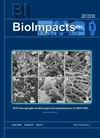对不同对接方案进行基准测试,预测配体与环加氧酶的结合姿态,筛选化学文库
IF 2.2
4区 工程技术
Q3 PHARMACOLOGY & PHARMACY
引用次数: 0
摘要
非甾体类抗炎药(NSAIDs)是一类作用于环氧化酶COX-1和COX-2的重要药物。由于其众多严重的副作用,有必要寻找新的选择性,安全,有效的抗炎药物。新型治疗药物的芯片设计在当今的药物研发过程中扮演着重要的角色。在大多数情况下,设计策略需要使用分子对接计算。对接过程可能需要特定于案例的条件才能获得成功的结果。此外,有许多不同的对接方案可供选择,这突出了针对给定问题确定最合适的对接方法和条件的重要性。方法:通过对GOLD、AutoDock、FlexX、Molegro Virtual Docker (MVD)和Glide五种常用的分子对接程序的性能进行评价,预测共结晶抑制剂在已知环加氧酶配合物结构中的结合模式。此外,对表现最佳的Glide、AutoDock、GOLD和FlexX进行了基于对接的虚拟筛选,对环加氧酶活性配体和诱饵分子组成的文库进行了进一步评估,并通过受试者工作特征(ROC)分析评估了获得的对接分数。结果:对接实验结果表明,Glide程序能够正确预测COX-1和COX-2酶共结晶配体的结合位姿(RMSD小于2 Å),即预测准确率为100%,优于其他对接程序。然而,其他研究的对接方法正确预测配体结合姿态的性能在59%到82%之间。经ROC分析处理的虚拟筛选结果显示,所有测试方法都是针对COX酶的分子分类和富集的有用工具。得到的auc范围为0.61 ~ 0.92,富集系数为8 ~ 40倍。结论:所得结果支持了选择合适的对接方法对预测配体-受体结合模式的重要性,并为cox配体对接计算提供了具体信息。本文章由计算机程序翻译,如有差异,请以英文原文为准。
Benchmarking different docking protocols for predicting the binding poses of ligands complexed with cyclooxygenase enzymes and screening chemical libraries
Introduction: Non-steroidal anti-inflammatory drugs (NSAIDs) constitute an important class of pharmaceuticals acting on cyclooxygenase COX-1 and COX-2 enzymes. Due to their numerous severe side effects, it is necessary to search for new selective, safe, and effective anti-inflammatory drugs. In silico design of novel therapeutics plays an important role in nowadays drug discovery pipelines. In most cases, the design strategies require the use of molecular docking calculations. The docking procedure may require case-specific condition for a successful result. Additionally, many different docking programs are available, which highlights the importance of identifying the most proper docking method and condition for a given problem. Methods: In the current work, the performances of five popular molecular docking programs, namely, GOLD, AutoDock, FlexX, Molegro Virtual Docker (MVD) and Glide to predict the binding mode of co- crystallized inhibitors in the structures of known complexes available for cyclooxygenases were evaluated. Furthermore, the best performers, Glide, AutoDock, GOLD and FlexX, were further evaluated in docking-based virtual screening of libraries consisted of active ligands and decoy molecules for cyclooxygenase enzymes and the obtained docking scores were assessed by receiver operating characteristics (ROC) analysis. Results: The results of docking experiments indicated that Glide program outperformed other docking programs by correctly predicting the binding poses (RMSD less than 2 Å) of all studied co-crystallized ligands of COX-1 and COX-2 enzymes (i.e., the performance was 100%). However, the performances of the other studied docking methods for correctly predicting the binding poses of the ligands were between 59% to 82%. Virtual screening results treated by ROC analysis revealed that all tested methods are useful tools for classification and enrichment of molecules targeting COX enzymes. The obtained AUCs range between 0.61-0.92 with enrichment factors of 8 – 40 folds. Conclusion: The obtained results support the importance of choosing appropriate docking method for predicting ligand-receptor binding modes, and provide specific information about docking calculations on COXs ligands.
求助全文
通过发布文献求助,成功后即可免费获取论文全文。
去求助
来源期刊

Bioimpacts
Pharmacology, Toxicology and Pharmaceutics-Pharmaceutical Science
CiteScore
4.80
自引率
7.70%
发文量
36
审稿时长
5 weeks
期刊介绍:
BioImpacts (BI) is a peer-reviewed multidisciplinary international journal, covering original research articles, reviews, commentaries, hypotheses, methodologies, and visions/reflections dealing with all aspects of biological and biomedical researches at molecular, cellular, functional and translational dimensions.
 求助内容:
求助内容: 应助结果提醒方式:
应助结果提醒方式:


